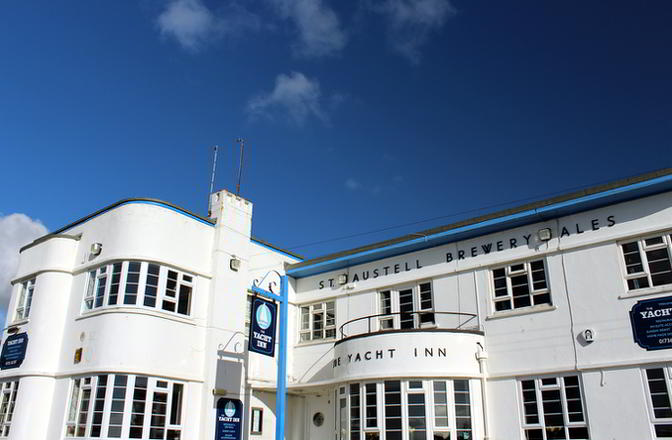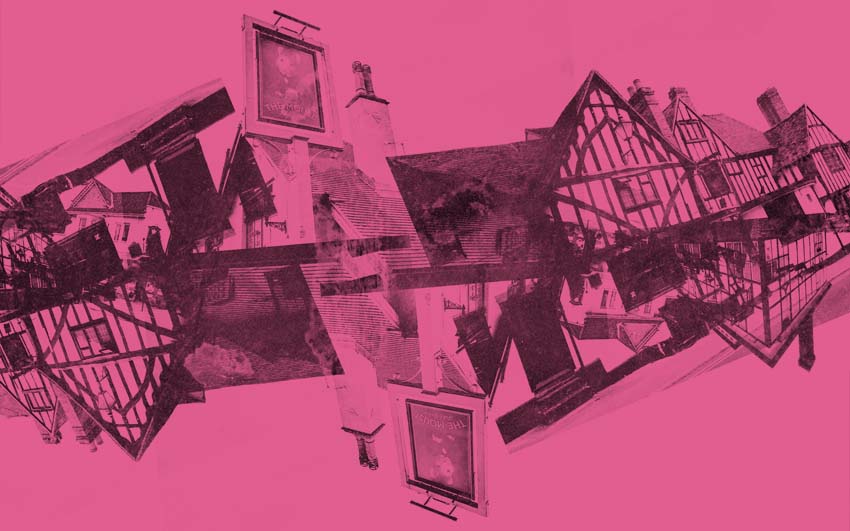Visit the Boak and Bailey's Beer Blog site
Every Saturday we share links to a selection of articles or blog posts about beer and pubs. This time we’ve got Art Deco pubs, posh publicans and lethal breweries.
First, some news. The Stonegate pub chain has issued a profit warning putting the future of its more than 4,000 outlets in doubt. This story also highlights the problem with chains: when they go, it can potentially wipe out a bunch of pubs at once, rather than the slow drip-drip of closures, causing a jolt across the industry.
 Still on the subject of pubs under threat, for Pellicle Jacob Smith has written a provocative piece questioning the benefits of pubs being taken over and run by local communities:
Still on the subject of pubs under threat, for Pellicle Jacob Smith has written a provocative piece questioning the benefits of pubs being taken over and run by local communities:
In a 2022 report, the Plunkett Foundation, a charity which helps rural communities in Britain to create and run community-owned businesses, reported that only one in 12 rural community-owned pub projects reached trading status. That means 91.7% of all rural community ownership pub bids failed without ever pouring a pint. These failed bids are rarely, if ever, highlighted by mainstream media. And while it’s human nature to focus on the winners and allow the also-rans the dignity of anonymity, such blatant survivorship bias risks distorting our perception.
 We’re going to bundle together two related posts here, both about inter-war pubs. First, there’s a piece by Joshua Abbott of Modernism in Metroland about modernist and Art Deco pubs in outer London:
We’re going to bundle together two related posts here, both about inter-war pubs. First, there’s a piece by Joshua Abbott of Modernism in Metroland about modernist and Art Deco pubs in outer London:
The breweries of the 1920s and 30s wanted to overhaul the image of the pub, changing it from a dirty, dark place of drunkenness to somewhere light, spacious and family friendly. To do this they employed architects or even founded their own in-house design departments to produce pubs that the average, respectable citizen would be happy to be seen in. These new pubs were often built besides the new ring roads and bypasses being constructed at the time. Middle class families could take their newly purchased car out for a Sunday drive and have lunch at a suitable pub along the way. A nice example is the neo-Tudor style Daylight Inn in Petts Wood opened in 1935 by Charringtons Brewery, and designed by their in-house architect Sidney Clark.
Then, over at Pub Gallery, Dermot Kennedy has part one of a series of heavily-illustrated posts about Art Deco pubs, starting with those to be found on the English coast:
The trend for streamline moderne in architecture coincided with a boom in ocean going liners, and the launch of the SS Normandie in 1935 and the RMS Queen Mary in 1936 was huge news at the time. Both had art deco interiors and architects were inspired to incorporate features from the liners into their new pubs. The obvious place to locate them was by the sea, and a number of ports and resort towns found themselves with art deco pubs by the end of the 1930s.
 Jeff Alworth has shared a chunk of a memoir in progress focusing on his father and stepfathers and how the relationships they had with alcohol might have shaped his attitude to beer:
Jeff Alworth has shared a chunk of a memoir in progress focusing on his father and stepfathers and how the relationships they had with alcohol might have shaped his attitude to beer:
I know almost nothing about my birth father, yet he looks back at me from the mirror. My thin body, over six feet of it, is Gorostiza rather than stocky Metcalf. It’s a Basque body, or partly so, which isn’t uncommon in Boise, with the largest population of Basques outside Europe… He left me one more inheritance—an affection for booze… The Gorostizas were drinkers. At large Gorostiza family gatherings, the wine and liquor flowed. Mom recalled them more with wonder than affection. The Metcalfs also had big family gatherings, even loud ones. But they were sedate, whereas the Gorostiza get-togethers were tinged with the chaos of drink… Unlike her parents and sister, Mom liked to drink, too. And she liked drinking with Richard; it was something they did together. I think that’s part of the reason Mom liked Richard—he was older, had this strange family, and loved to go out at night. Mom loved getting all dressed up, selecting one of the wigs from the collection she kept on Styrofoam heads in her bedroom, do her nails, and go out on the town.
 Liam K is back with another instalment of his series ‘100 Years of Irish Brewing in 50 Objects’. This time he’s used a copy of the Guinness in-house magazine from 1963 as the jumping off point for an exploration of health and safety in Irish breweries – or, more specifically, of their absence:
Liam K is back with another instalment of his series ‘100 Years of Irish Brewing in 50 Objects’. This time he’s used a copy of the Guinness in-house magazine from 1963 as the jumping off point for an exploration of health and safety in Irish breweries – or, more specifically, of their absence:
The newspapers of the 1800s and early 1900s are dotted with reports of deaths in Irish breweries to the point where almost every decade had a report or two of workers being killed on or off site. It is, even at this remote juncture, a difficult read, as many of the reported inquests go into the details of precisely what happened these individuals, and often include a list of the people they have left behind, where sometimes, almost an afterthought, the reporter will mention the wife, children, parents or siblings that were left in heartache and possible destitution at the loss of a loved one. It is worth remembering at all times that we are dealing with actual human beings who lived not terribly long ago and who possibly still have ancestors walking our streets whose lives were affected directly or indirectly by such a dreadful occurrence.
 On Substack David Jesudason has dug up the story of an aristocratic publican whose snobbery and racism were shameless:
On Substack David Jesudason has dug up the story of an aristocratic publican whose snobbery and racism were shameless:
“One has an absolute right to refuse service to anyone without reason. Or rather, one has until this moment.”… The words above were spoken in 1969 by the ‘esquire’ and proprietor of the Tickell Arms, Whittlesford, Cambridgeshire, Joseph (AKA John or Kim) Hollick de la Taste Tickell… Tickell had been a publican there since 1958; his family (he claimed) at one time owned 11,000 acres but in 1970 this had dwindled to fewer than 100 acres. Despite this shrinking Cambridgeshire empire – or because of it – he ran the Tickell Arms as a mini-fiefdom which largely manifested itself as him deciding who was or wasn’t allowed to drink there… He barred people for a lot of class-based reasons which seem bizarre today. One of his biggest annoyances were people who wore braces – calling them “hideous apparel worn by grubby people and are offensive to me and other customers”. In fact, a lot of the reasons for barring people were ridiculous, like in 1973 he threw out a group of drinkers for wearing nuclear disarmament badges.
For more good reading check out Alan McLeod’s round-up from Thursday.News, nuggets and longreads 20 April 2024: Slap Shot
News, nuggets and longreads 20 April 2024: Slap Shot originally posted at Boak & Bailey's Beer Blog
More...
Still on the subject of pubs under threat, for Pellicle Jacob Smith has written a provocative piece questioning the benefits of pubs being taken over and run by local communities:
We’re going to bundle together two related posts here, both about inter-war pubs. First, there’s a piece by Joshua Abbott of Modernism in Metroland about modernist and Art Deco pubs in outer London:
Jeff Alworth has shared a chunk of a memoir in progress focusing on his father and stepfathers and how the relationships they had with alcohol might have shaped his attitude to beer:
Liam K is back with another instalment of his series ‘100 Years of Irish Brewing in 50 Objects’. This time he’s used a copy of the Guinness in-house magazine from 1963 as the jumping off point for an exploration of health and safety in Irish breweries – or, more specifically, of their absence:
On Substack David Jesudason has dug up the story of an aristocratic publican whose snobbery and racism were shameless:




 Reply With Quote
Reply With Quote